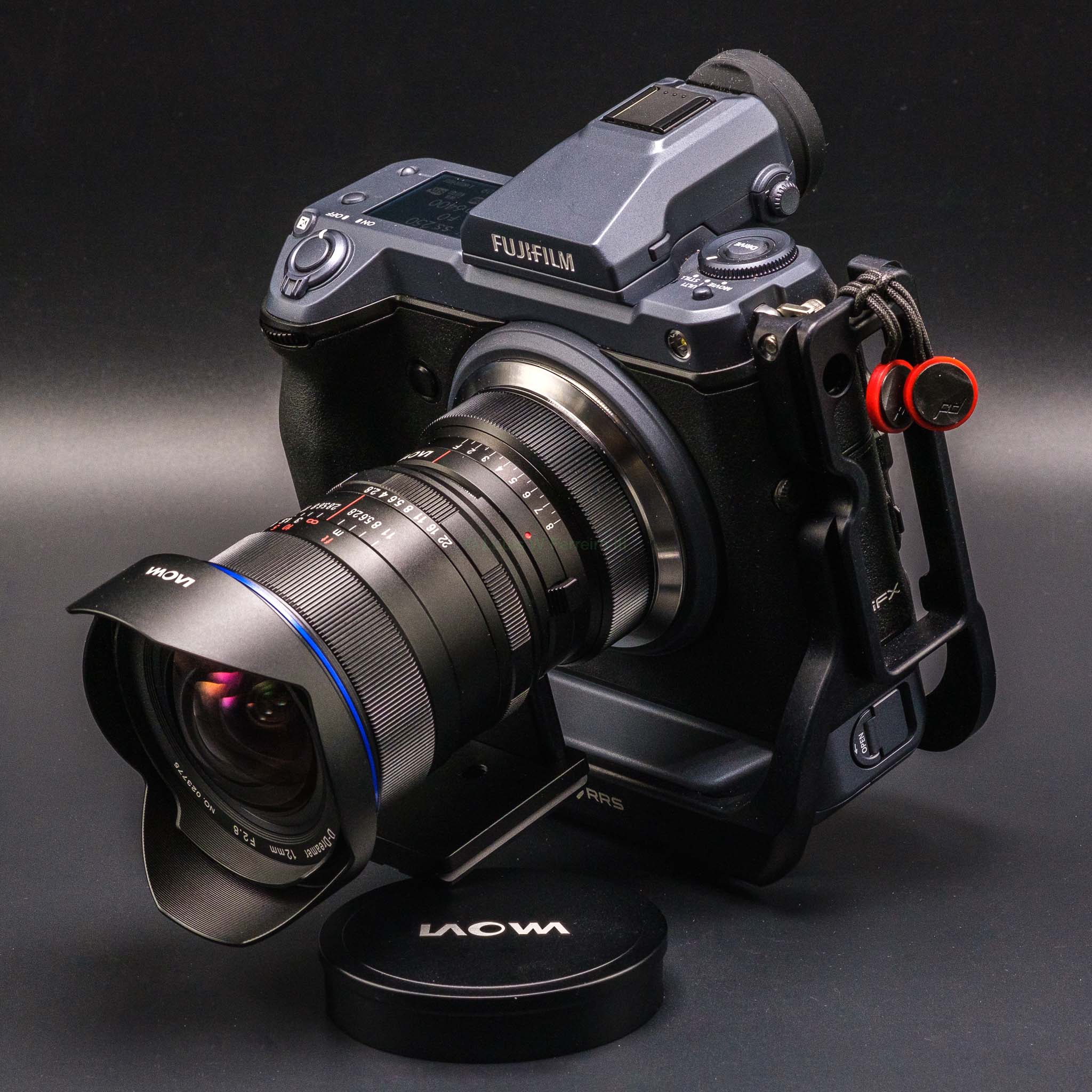
I have been shooting Astrophotography for a while now and I always like to try new things so I picked up the Venus Optics Laowa Magic Format Converter MFC (Nikon F to Fujifilm G) for my Fujifilm GFX100 and the Venus Optics Laowa 12mm f/2.8 Zero-D and Samyang 24mm f/1.4 ED AS UMC Wide-Angle for Nikon F Mount to use during the Quarantine as the ultimate social distancing. Both lenses worked well, but I decided to focus on the Venus Optics Laowa 12mm f/2.8 Zero-D for now.
Shooting Astrophotography on the GFX100 is a bit tricky because the high megapixel count can make it difficult to get pinpoint stars when shooting the Milkyway. If you use calculators like photo pills they will inform you that with a 12mm f/2.8 lens you can shoot for 53s if you use the classic 500 Rule, but if you go by the NPF rule that takes into account the megapixels of your camera you can only expose for 16.76s on the GFX100. If you use the GFX50S/GFX50R the NPF Rule is 20.34s, which is more reasonable.
The reason this is important is that to get a good exposure that I could work with I had to shoot wide open for 30 seconds at 6400ISO, which did allow for some streaking when zoomed in, but it looks good zoomed out. I hope to squeeze in one or two more nights during the Quarantine, but I am very happy with the Venus Optics Laowa Magic Format Converter MFC (Nikon F to Fujifilm G) so far. It makes the GFX100 a much better camera for astrophotography than it could be with any of its native lenses.
Initially, I was a bit disappointed with my results and I wished I brought more useful lighting to expose the surroundings better with light painting, but I found that using Capture One with Luminar 4 gave me some good results that I am sharing below. I worked the foreground elements in Capture One and then exported the file as a 16-bit TIFF file to open in Luminar 4. In Luminar 4 I used their superior masking tool to apply edits to the sky, which made the Milky Way pop more than Capture One could.
I can’t say I’m a fan of Caputre One, but it is growing on me for some purposes, but Luminar 4 never fails to impress. I’m trying to learn some new editors in-depth during the Quarantine so if you want to see some comparison results make sure to follow me on Instagram because I’m starting to reprocess some of my favorites photos with new editors and posting the results. At this point, I would probably move to a more Luminar centric workflow if the app was more logically organized for me, but the same is true of Capture One. I hope they both continue to grow on me as I learn them better, but both do a better job processing Fujifilm files than Lightroom in my experience.
Fujifilm GFX News, Rumors, and Collaboration
Fujifilm GFX Owners Group
Fujifilm GFX Page
Follow Fujiaddict on Facebook, Twitter, Instagram, and YouTube
